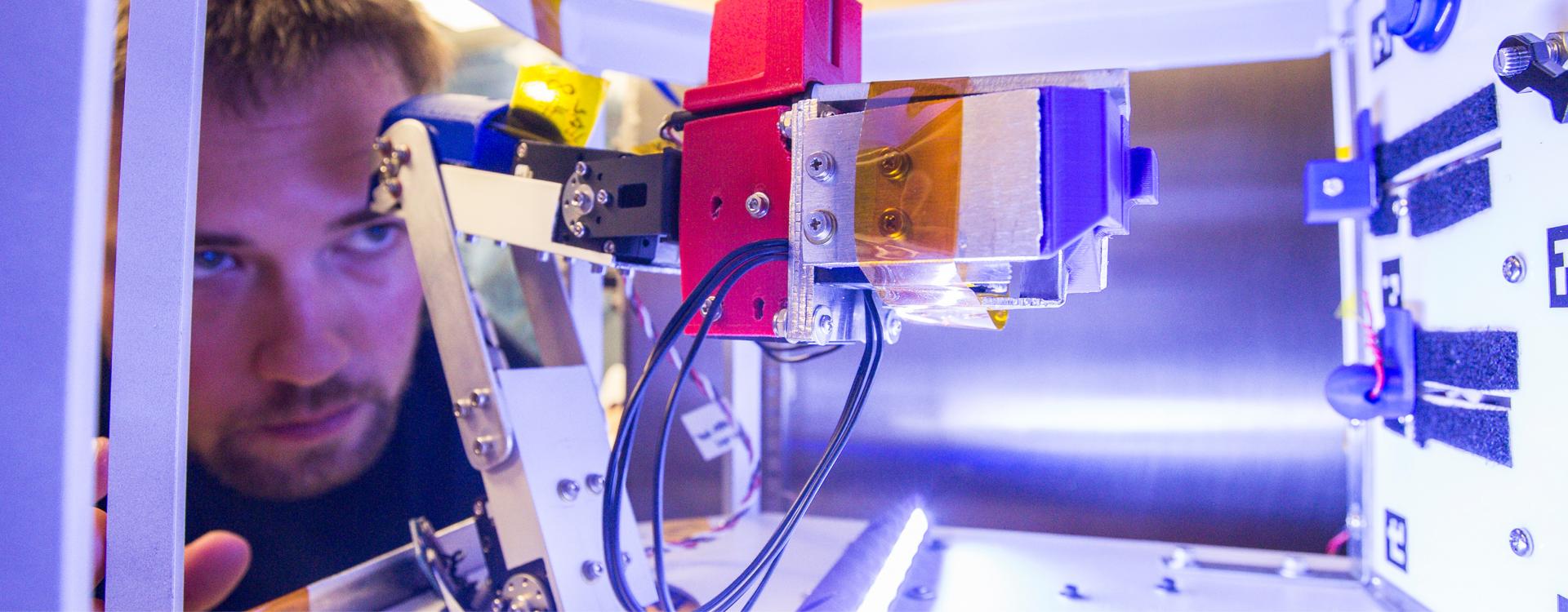60 for 60: Visiting Artist Program increased exposure for artists at Durham Tech
In celebration of Durham Technical Community College’s 60th anniversary, the College is publishing 60 for 60 – a storytelling campaign that highlights the people, places, and events that have progressed and shaped the College’s six decades of impact. To view more 60 for 60 stories, visit www.durhamtech.edu/60for60.
During the 1970’s, the North Carolina Department of Community Colleges and North Carolina Arts Council formed a Visiting Artist Program that allowed more than 300 artists to complete one or two-year residencies at colleges throughout the state.
This gave artists the opportunity to share their talents with the community through lectures, demonstrations, concerts, exhibits, and special programs. Artists were limited to a max of four years in the Visiting Artist Program and could participate at different institutions.
In 1976, the program came to then-Durham Technical Institute.
The College developed a committee to screen, interview, and select visiting artists to participate – reviewing videotapes, slides, writings, and other material for artists that were approved by the North Carolina Arts Council.
Although the committee changed during each residency, some of the members included former Durham Tech employees; Lowell Allen, Dora Bailey, Pat Jones, Bill Martin, Donald Kritsch, Richard Godfrey, Ed Moore, Ruth Lewis, Eva McCullough, and Dr. Bill Sewell.
“The program was entertaining and helpful because visiting artists were selected to cover a wide range of different art forms and deliver a diversity of art and skills demonstrated at the College,” said Kritsch.
Durham Tech showcased eight artists from 1976 through 1991, including:
- Kevin Delaney, 1976-1978, Folk Music
- Nancy Tuttle May, 1978-1980, Painting
- K. Susanne Yowell, 1980-1982, Fiber Arts
- Michael Joe Thompson, 1982-1983, Guitar
- Roger B. Manley, 1983-1985, Photography
- Arnold Richardson, 1985-1987, Folks Arts Sculpture
- Michael Allen Porter, 1987-1989, Jazz Flute
- Bo Nathan Newsome, 1989-1991, Oboe
Mary B. Regan served as the Executive Director of the North Carolina Arts Council for 39 years and wrote a book, They Changed the State: The Legacy of North Carolina’s Visiting Artist, where she shares insight on the program.
“The idea was to introduce new art forms to the communities of the state. At first this meant classically trained musicians, university-educated painters and sculptors, writers with advanced degrees. But a rich mix occurred when folks entered the program. Excellent artists seemed inherently to recognize excellence in its many forms,” Regan said.
There were several benefits for artists chosen to participate in the program. They were able to do what they love, meet new people, educate community members on art, travel to colleges to perform, and get paid for participating in the program.
“Artists were invited into classrooms to do demonstrations and spent 40-50% of the time on campus and the rest of the time in the community,” said Barber Baker, former Durham Tech employee.
Arnold Richardson, a Haliwa-Saponi tribe member of North Carolina, master carver and flutist, and one of the participating artists, said the program allowed him to become more visible in the community.
“As an American Indian, I was able to teach community members about American Indians and who we are,” Richardson said. “My sculptures are based on things that I see in the clouds and American Indian traditions.”
Durham Tech also provided artists with workspaces to create. Three of Richardson’s stone sculptures are still located in the main lobby of the Durham Tech Library on Main Campus.
Roger Manley participated in the program and is now the Director and Curator at Gregg Museum of Art & Design at NC State University. Manley said the Visiting Artist Program allowed him to get out and see the entire state and the program helped boost his confidence.
“The Visiting Artist Program reaffirms things that you wanted to believe were true about yourself and it gives you confidence. I became very comfortable talking to groups of people, selling art to people, and having a mutual exchange, which is similar to what I do a lot of now at the museum,” Manley said.
During his residency at Durham Tech, Manley photographed many things, including tobacco workers, Native American groups, and local blues musicians.
“The program allowed community colleges to offer the arts to the community for free and created a lot of goodwill between colleges and the places they served. This was an opportunity for artists to get exposure and smaller communities who would have not ordinarily had events like these,” said Manley.
Artists would also participate in the exchange program where they would visit another college and perform.
The Visiting Artist program was significant in bringing people together from different backgrounds and educating individuals on the variety of art that North Carolina had to offer. Many of the artists who participated in the program are still contributing to art in some form today.
Vicki Vitiello, Director of Operations at North Carolina Arts Council, said the Visiting Artist Program created opportunities across the state to engage in the arts and cultural programming.
“What we couldn’t know at the time was the profound and lasting legacy that the visiting artists themselves would have in shaping our state’s arts infrastructure,” said Vitiello. “Artists came from all over to take these jobs, and many made North Carolina their forever home, serving our state as community leaders, founding arts organizations, and establishing arts programs that remain a part of our culture landscape to this day. They truly changed the state.”
For more information, contact Desiree Towson, M.S., Communications and Public Relations Coordinator, at allisontowsond@durhamtech.edu.

